Of Marine Iguanas, Flightless Cormorants, and Penguins
A day of birding and snorkeling the coldest, richest waters in the Galapagos.
I’ve been slowly posting photos from the WINGS Galapagos cruise aboard the Integrity this past November to my own Birdernaturalist Blog but decided move the topic over here.
Everything is so easy to photograph here, even with my little Canon PowerShot point-and-shoot, and we had really good light today. This is already Day 4, and I still captured hundreds of images, despite having way too many to sort through from the first three days. After cruising on calm seas all night, we awoke approaching the westernmost island, Fernandina.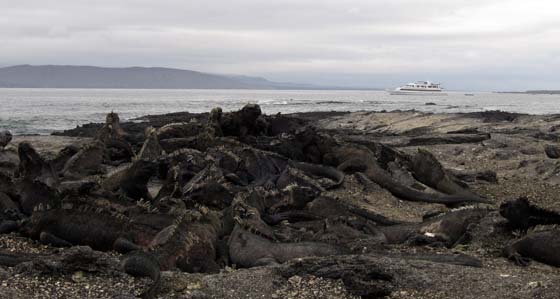
Every cruise in the Galapagos features a morning excursion and an afternoon activity. Our morning was taken up by an interesting hike on the relatively recent lava flows and out to Punta Espinosa. The low areas in the lava flow are right at sea level, and mangroves have colonized them.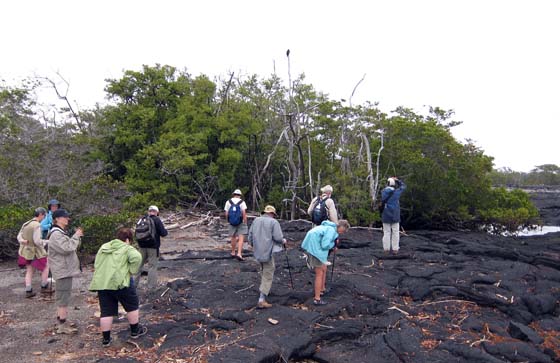
At least three Galapagos Hawks cruised the area, and as with almost all wildlife here they were quite approachable. This one looks like it could use a good molt.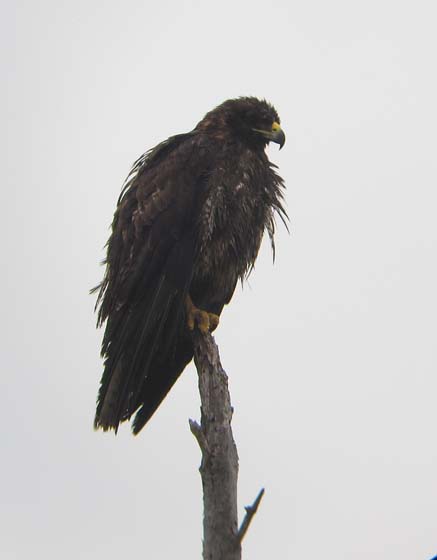
Richard Polatty, our locally licensed guide and a trained geologist, told us all kinds of facts about the types of lava and how these domes and cracks were formed.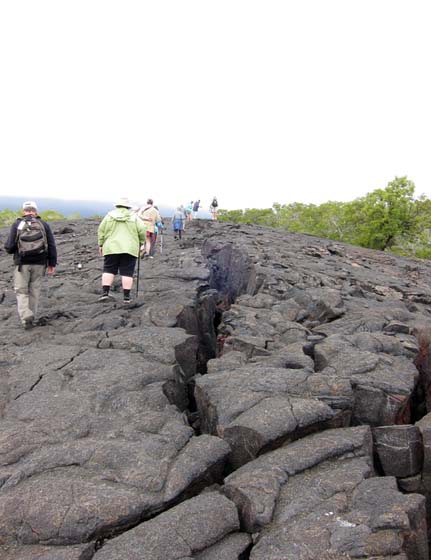
The plants that colonize this habitat are amazing. This is the endemic Brachycereus nesioticus, Lava Cactus.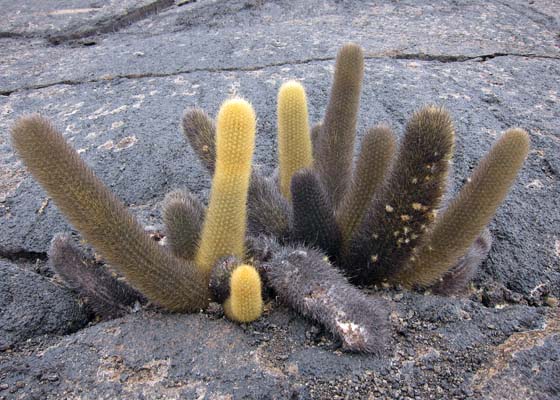
This endemic Mollugo snodgrassii is yet another colonist of these stark lava flows. The family Molluginaceae is closely related to Aizoaceae, to which family ice plants belong.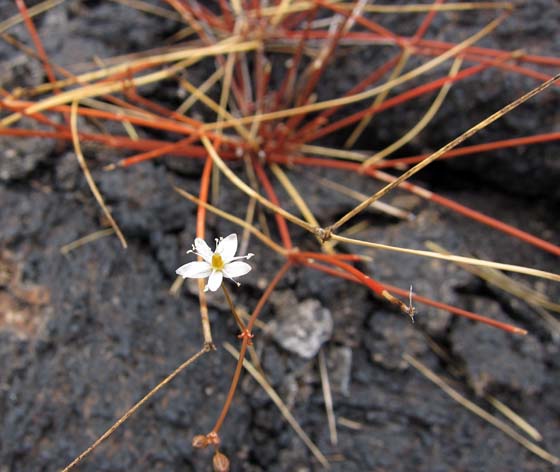
Most sedges grow in moist places, but here in the Galapagos things are a bit different.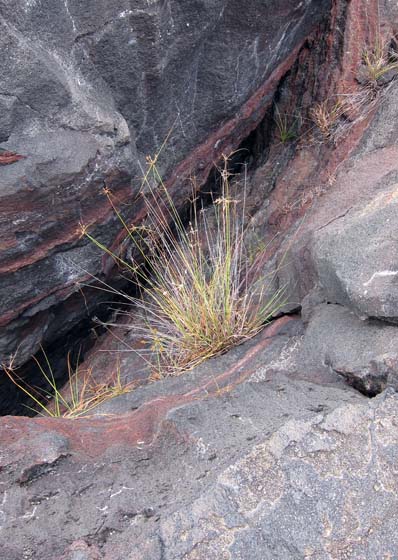
The Green Warbler-Finch here actually looks rather gray to me.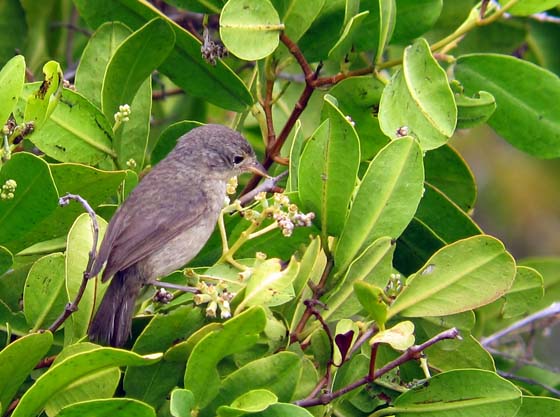
And just as cheeky as the other mockingbirds we saw was this Galapagos Mockingbird of the nominate subspecies. We also saw our only Galapagos Martins here.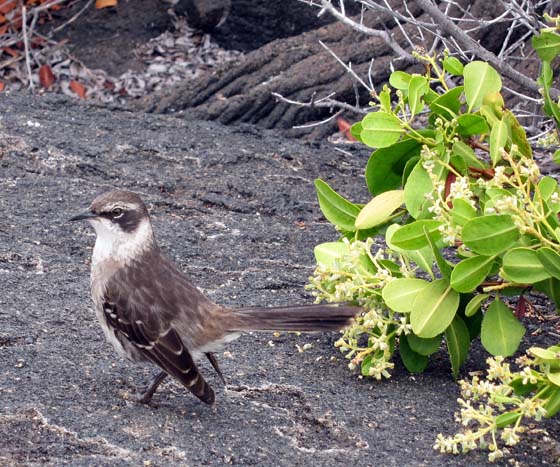
The Galapagos Lava Lizards here aren’t as colorful as the endemics of the southern and eastern islands.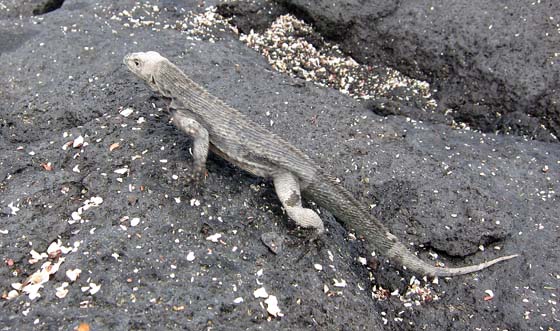
We ended our walk heading out to Punta Espinosa.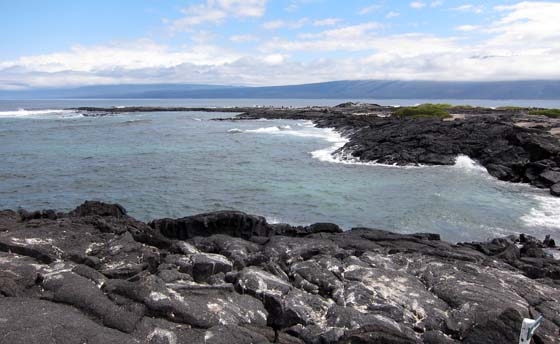
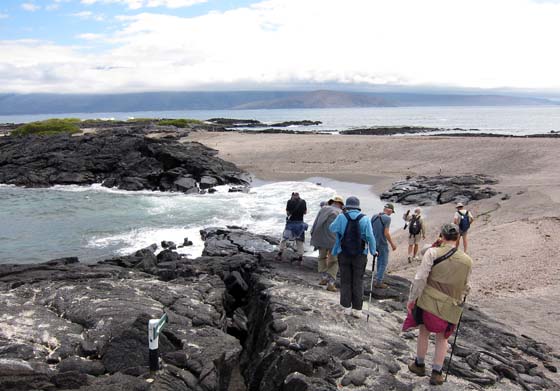
The star attraction here is the Flightless Cormorant. In 2012 the Galapagos National Park is instituting new rules that won’t allow boats to visit any one island more than once every two weeks. As it is now, each boat has a set week-long itinerary, and a few such as the Integrity, have one that visits all the best birding islands. So starting in 2012, one will have to choose between seeing the Flightless Cormorant and Galapagos Penguins or nesting colonies of boobies, frigatebirds, and albatrosses.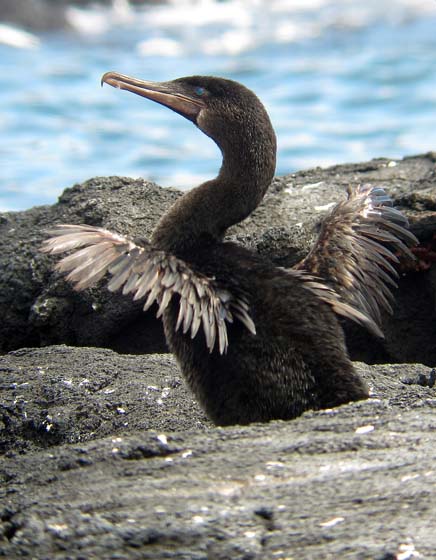
Sally Lightfoot Crabs are quite common everywhere and one of the shiest creatures in the islands.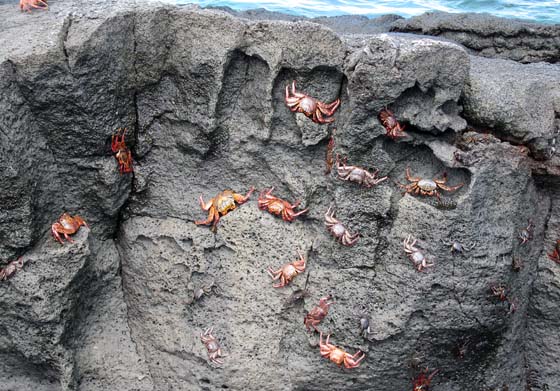
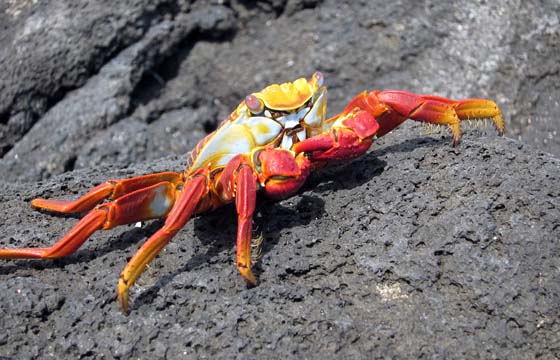
Marine Iguanas, on the other hand, simply ignore you, and you have to be careful not to step on them.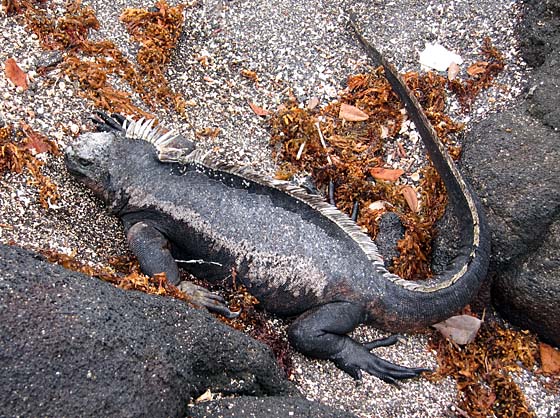
Even this American Oystercatcher (of the endemic galapagensis subspecies) was not too shy. We watched it for a while until it sat down – right on two eggs hidden in the lava.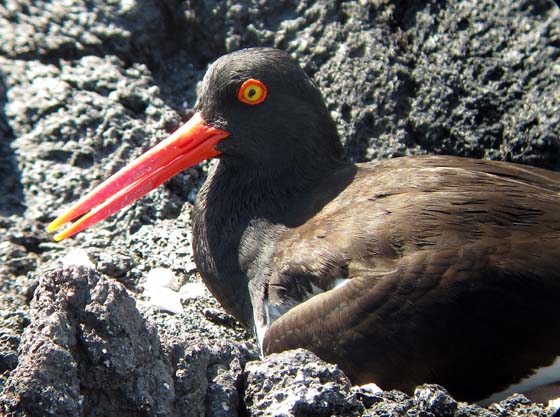
There are very few dragonflies known from the Galapagos, and this is one of them – Tramea calverti, Calvert’s Saddlebags. I digiscoped this using my Zeiss Diascope.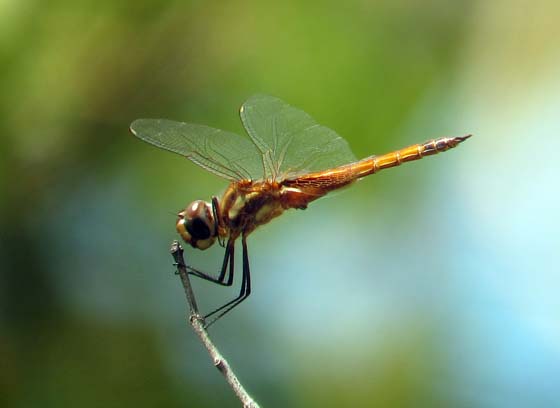
For our afternoon excursion (the park rules require the yacht to lift anchor by noon), we motored north between the islands of Isabela and Fernandina towards the northern end of Isabela.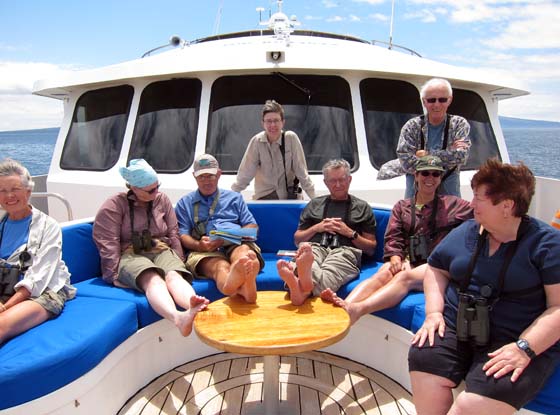
The rich waters here hosted many birds including flocks of hundreds of Galapagos Shearwaters. There were also several Galapagos Petrels and Waved Albatrosses.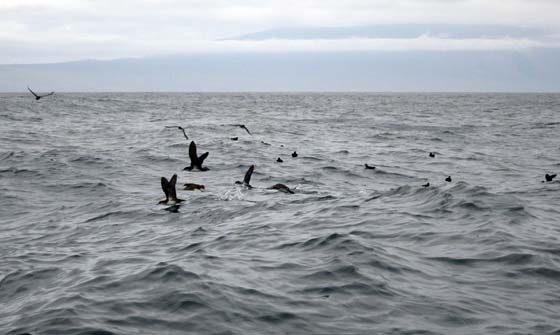
We first snorkeled below the imposing cliffs of Punta Vicente Roca. The water was cold but tolerable, and the number of fish was fantastic. We were treated to a “fly-by” of a huge school of Black Skipjacks that surrounded us suddenly and just as quickly were gone.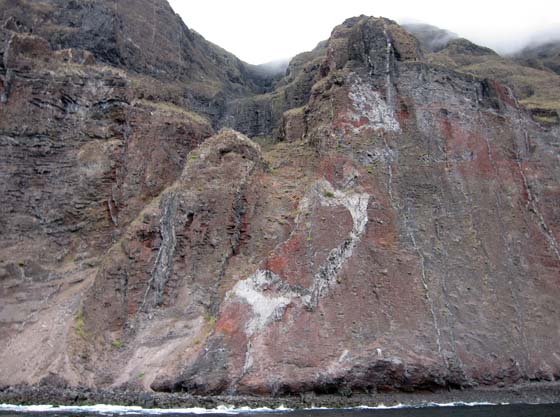
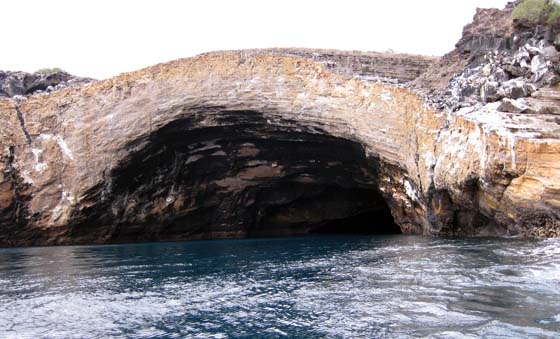
After the snorkeling, the whole group outing was a leisurely cruise up to the cliffs in a panga. This is one of our expert motoristas, Eusebio.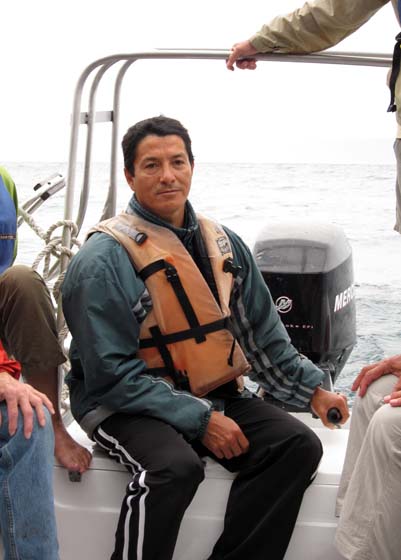
Richard Polatty continued to explain many of the geological features.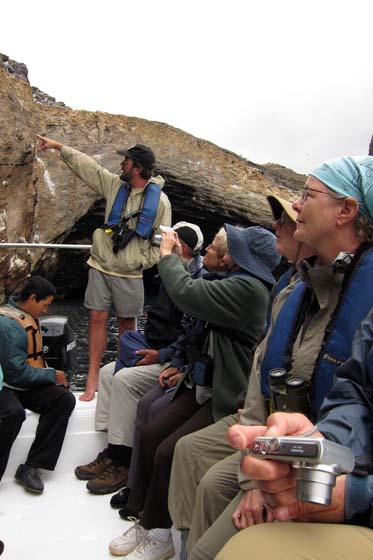
While we both pointed out the seabirds nesting on the cliffs, here Brown Noddies.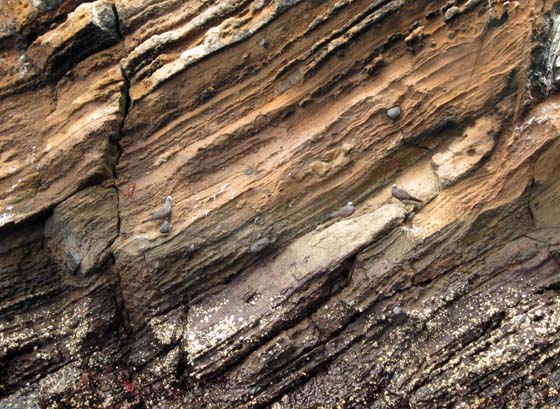
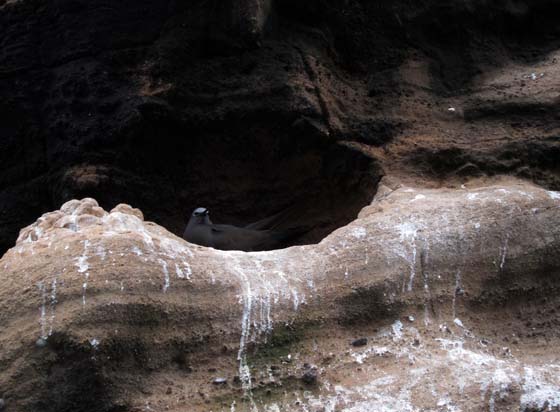
This is a Blue-footed Booby and a Swallow-tailed Gull (a mating pair, actually).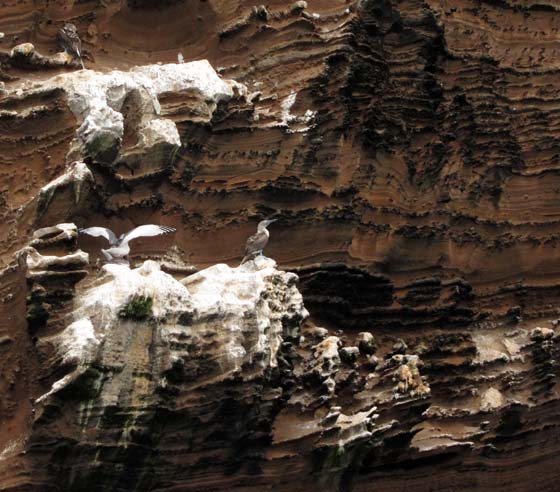
We were able to motor quite close to this Galapagos Penguin, the same one we were able to snorkel up close to.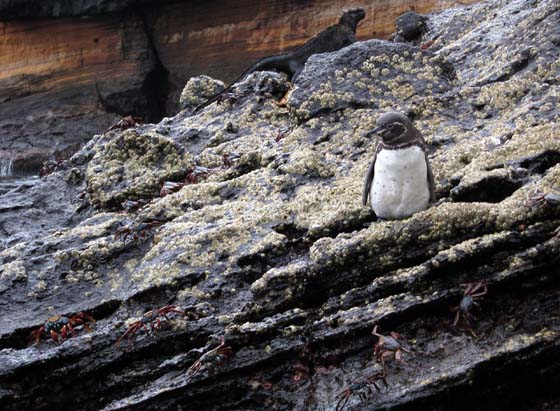
The Integrity is one of the nicest – if not THE nicest – yachts catering to small groups (16 is the maximum). Here we are on the sun deck, enjoying a champagne cocktail celebration as we cross to the north side of the Equator.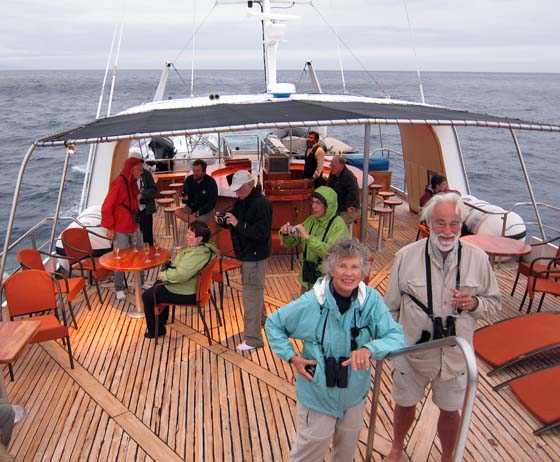

Great Post Rich! You have really shown some of the incredible wildlife and lavascapes available to the Galapagos visitor and I for one would love to visit! The photo opportunities look quite mind-blowing!! So much to take in and enjoy there!!